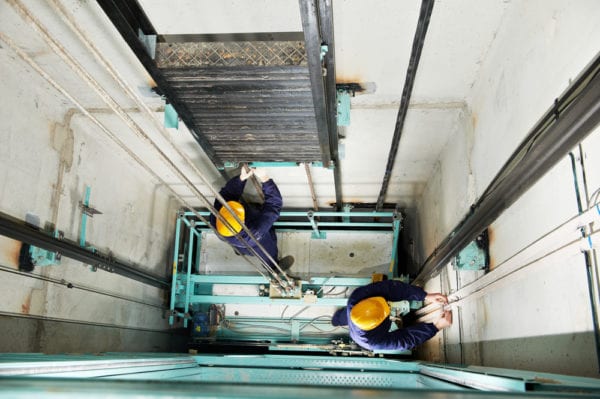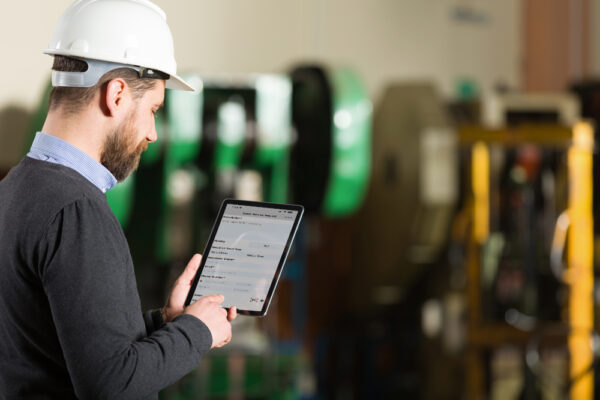
Maintenance teams rely on others – such as employees, tenants, and customers – to report issues as they arise. To manage these requests effectively, organizations use specialized software – called a maintenance request system – to streamline communication, speed up resolution time, and ensure accountability.
However, software alone isn’t enough. Effective request management also requires support from internal processes and workflows to turn maintenance requests into completed work orders efficiently and cost-effectively. In this article, we’ll explore what maintenance request systems are and how computerized maintenance management system (CMMS) software supports them.
What is a Maintenance Request System?
A maintenance request system is specialized software used by maintenance teams to collect, track, and manage requests for maintenance work. It allows requesters to report maintenance issues directly to the maintenance team using a web-based form or mobile app.
While the software is the core component, a maintenance request management system also includes the processes that support it – such as how requests are submitted, workflows for reviewing and approving them, how the work gets completed, and communication back to requesters. Together, these elements form an organized approach to resolving maintenance issues quickly and consistently.
How Maintenance Request Systems Work

While maintenance request software plays a central role in a maintenance request system, it functions within a broader system of people, processes, and workflows.
Maintenance Requests
Maintenance requests are the formal submission from requesters that report a maintenance issue. These requests give the maintenance team visibility into ongoing needs and provide the information needed to determine if the request is valid, prioritize the work, assign it to a technician, and schedule it appropriately.
Request Submission
The submission process refers to how maintenance teams receive requests and what information requesters must provide. Maintenance teams often accept requests through multiple channels – phone calls, emails, text messages, or even in-person conversations. Property maintenance teams, in particular, often direct clients to submit requests through an online form, typically found on the resident portal or company website.
However, without a structured process in place, gathering complete and accurate information can involve a lot of back-and-forth, wasting time and delaying repairs. Maintenance request software solves this by offering customizable forms that allow organizations to define which fields are required and ensure they collect all necessary information for further processing.
Review and Approval Processes
A review and approval process allows organizations to control which maintenance requests become work orders. While some organizations automatically approve all requests, others review each one to ensure that it is valid, not a duplicate, and not already being addressed.
This process typically involves assigning a designated reviewer – usually a maintenance manager or planner – who evaluates requests based on criteria such as the type of issues, urgency, completeness, asset criticality, maintenance budget, and other factors. Having an established process ensures only legitimate, actionable requests move forward, which prevents unnecessary or redundant work.
Work Order Generation
Whether requests are automatically approved or manually reviewed, valid requests eventually become work orders. At this stage, the maintenance team can enter additional details such as required tasks, parts, tools, and other relevant information. Once planned, the work order can be prioritized, assigned to a technician, and scheduled.
Communication and Status Updates
Keeping requesters informed about the status of their maintenance requests builds trust and demonstrates that the maintenance team is responsive, transparent, and accountable. Maintenance request systems can automatically send notifications when a request is received, approved, or completed. These updates reassure requesters that their issues are being addressed, reduce duplicate submissions, and improve the maintenance team’s reputation.
Completion and Documentation
Tracking maintenance requests in a computerized system helps ensure all reported issues are resolved and that no requests fall through the cracks. Request records also provide a clear paper trail, verifying that the completed work directly addresses the original problem.
Performance Tracking
Maintenance request systems provide valuable data for measuring team performance. By tracking key performance indicators (KPIs), such as average response time and turnaround time, organizations can monitor how quickly and effectively maintenance issues are addressed. Tracking these metrics can help identify bottlenecks in the request process and hold the maintenance team accountable for providing excellent customer service.
Maintenance Request System Use in Different Industries
Maintenance request systems are adapted to fit the structure and needs of different organizations. For example:
- Manufacturing: Production staff use mobile devices or computer terminals to report early signs of equipment failure, poor performance, and other non-urgent issues.
- Property management: Tenants submit requests through an online web portal that is automatically routed to the correct team based on property location.
- Maintenance services: Customers report maintenance issues through the service provider’s web portal.
- Non-profit organizations: Coordinators review all requests, approve the necessary work, and assign jobs to external vendors or volunteers based on availability or budget.
Learn more about how Greater Hickory Cooperative Christian Ministry improved their maintenance process with FTMaintenance’s maintenance request system.
Maintenance Request Software

While there are standalone tools available, maintenance request management software is typically built into computerized maintenance management system (CMMS) software. This provides maintenance teams with a single platform for managing maintenance work from the initial request to the closed work order. CMMS software with maintenance request management functionality offers the following benefits for maintenance teams:
- Centralized Request Portal: Provides a single channel for submitting maintenance requests and allows the maintenance team to receive, review, and manage them from one platform.
- Automatic Work Order Generation: Automatically turns approved requests into work orders, ensuring accuracy and enabling the maintenance team to begin planning and scheduling maintenance work more quickly.
- Request History: Creates a valuable paper trail that documents what issues were reported, how they were resolved, and when. Reviewing this data helps identify recurring problems, assets with chronic failures, and opportunities for preventive maintenance or root cause analysis.
- Automatic Requester Notifications: Sends real-time notifications to requesters when their requests are accepted, change status, and are completed.
- Mobile Access: Allows users to submit requests through a web browser or mobile app, making it easier to submit maintenance requests wherever maintenance issues are discovered.
While maintenance request software offers many benefits, its success ultimately depends on how it’s used. Following best practices helps you maximize efficiency and provide better customer service.
Best Practices for Managing Maintenance Requests
To get the most value from your maintenance request system, keep the following best practices in mind:
- Implement CMMS software with integrated maintenance request software to manage maintenance work from start to finish.
- Simplify request forms and provide access through any internet-connected device.
- Automate notifications to keep requesters in the loop about the status of their requests.
- Prioritize requests based on urgency and requester type.
- Regularly review requests to identify opportunities for increased preventive maintenance (PM).
- Track performance to continuously improve the maintenance request process.
To explore these practices in more detail, read our article Service Request Management Best Practices.
Deliver Better Customer Service with FTMaintenance Select
Maintenance requests are a critical piece of communication that helps maintenance teams stay aware of maintenance needs. A well-managed maintenance request system ensures that issues are documented, prioritized, and resolved efficiently, making it an essential part of effective maintenance management. At the center of that system is maintenance request software, like FTMaintenance Select.
FTMaintenance Select streamlines the maintenance request process, making it easier to submit requests, keep requesters informed, and help teams take action. Because maintenance request management is built into the larger CMMS platform, all related information is available within one platform, making it easy to generate work orders, assign tasks and technicians, and notify requesters when their requests are complete. Request a demo today to learn about FTMaintenance Select maintenance request software.